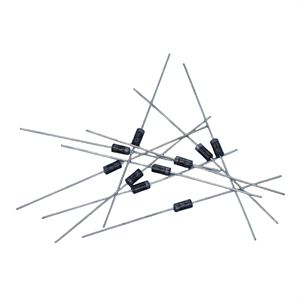Date:2024-12-01 Categories:Product knowledge Hits:390 From:Guangdong Youfeng Microelectronics Co., Ltd
In our work, we often encounter situations where equipment stops running due to damaged rectifier diodes. Faced with such situations, not only does it reduce efficiency, but it also increases costs.
There are six reasons why rectifier diodes are damaged, which can help everyone take precautions in advance and reduce the cost increase caused by rectifier diode damage.
Poor operation management: The on duty personnel are not responsible for their work and are not familiar with changes in external loads (especially from midnight to 6am the next day), or if there is an external load shedding fault, the operators do not take timely action and cause the rectifier diode to break through, resulting in external force failure.
Poor operating conditions: Due to incorrect calculation of the speed ratio or the diameter ratio of the two pulleys not meeting the speed ratio requirements, the generator runs at high speed for a long time, resulting in the rectifier diode running at high voltage for a long time, accelerating the aging of the rectifier diode and causing premature breakdown and damage.
Poor lightning and overvoltage protection measures: The rectifier device is not equipped with lightning and overvoltage protection, and even some devices with lightning and overvoltage protection installed may not be safe. The rectifier diode may be damaged due to lightning strikes or overvoltage.
Inconsistent specifications and models: When replacing a new rectifier diode, the working parameters were mistakenly changed or the wiring was incorrect, resulting in the breakdown and damage of the rectifier diode.
Small safety margin: The rectifier diode has a small safety margin for overvoltage and overcurrent. In the excitation circuit of the generator, the rectifier diode cannot withstand overvoltage or instantaneous overcurrent processes, which can cause damage.
Unqualified installation or manufacturing quality: Due to the long-term operation of the generator in large vibrations, the rectifier diode also operates under the external force of this vibration. At the same time, the generator speed is unstable, with high and low times, causing the working voltage of the rectifier diode to increase, resulting in aging and damage of the rectifier diode.
The inspection method for rectifier diodes is to first remove all rectifier diodes from the rectifier, and then use a multimeter to measure the two lead wires of the rectifier diodes. Both the head and tail should be tested once (in the 100 × R or 1000 × R ohm range).
If there is a significant difference in resistance values between two measurements, such as a resistance value of several hundred Ω to infinity, while the resistance value is only a few hundred Ω or even smaller, it indicates that the diode is good (except for soft breakdown diodes).
If the resistance values measured twice are almost equal and the resistance value is small, it indicates that the diode has been broken down and damaged, and cannot be used. If both measurements are infinite, it indicates that the diode is internally disconnected and cannot be used.

Previous: Classification, Structure, and Principle of MOSFET